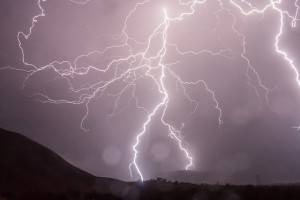In 1976 my brother and I went backpacking in Rocky Mountain National Park. On our first night of camping on a bluff overlooking a small stream, the local area was pummeled by rain-laden thunderstorms, resulting in an epic flood in the local Big Thompson Canyon, killing 144 people. Our camping location was, thankfully, not sufficiently near any body of water to be affected, save for the water running down the hillside past our tent. However, as we did not share our backpacking itinerary with our family back home, and since the flood became national news, and was in the same locale, our family understandably was quite worried about our safety. As there were no cells phones at that time, and the local phone network was either overloaded or inoperable, we were not able to check in for another day or so, which did not assist things.

Upon reflection, our situation was not much different than what occurred during the Philmont flash flood of 2015, where many worried parents were uncertain where their unit’s crew was at Philmont in relation to the location of the flash flood.
What is the moral to these stories? Parents place a lot of faith in their unit’s leaders to competently exercise their duty of care toward the attending scouts. Part of that duty of care should be for the unit’s leaders to provide parents with an itinerary for the anticipated outdoor event, particularly for multi-day trips, to the extent possible. This should include contact numbers in case of emergency. Nothing eases a parent’s concerns more than knowing where their child is, and what they are doing while there! Following this advice would certainly have saved my family several days of needless worry.
Safe Scouting.
